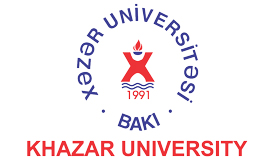International Conference on Materials Science and Research
November 16-18, 2017 Dubai, UAE
Processing of Arsenic-Containing Sulfide Minerals: Economics of Different Process Options for Copper and Gold Recovery, and Arsenic Immobilizations
The Robert M. Buchan Department of Mining, Queenʼs University, Canada
Several hydrometallurgical methods have been proposed or tested for the processing of arsenic containing copper sulfide ores and concentrates. This paper reviews the metallurgy of primary copper sulfide ores and concentrates. An update on the recent developments of the chloride processing of sulfide ores and concentrates is presented.
The arsenic immobilization process used to remove arsenic from arsenic-containing streams depends on the arsenic concentration in the solution and the arsenic species present. Regardless of the method used to remove arsenic from solution, ideal is that the majority of arsenic be in pentavalent oxidation state, As(V). Most of the arsenic immobilization processes used in the industry are hydrometallurgical in nature; however, there are currently studies underway which use pyrometallurgical processes to oxidize and / or immobilize arsenic.
In this paper we have reviewed and critically compared several arsenic oxidation and immobilization methods. The arsenic immobilization options from the weak acid scrubbing solutions including: (1) lime precipitation, (2) sulfide precipitation, (3) arsenic co-precipitation with ferrihydrite, (4) atmospheric ferric arsenate precipitation, and (5) scorodite precipitation methods such as Dowa process and EcoMetales Process have been reviewed.
Finally, the preliminary techno-economic analysis of the selected arsenic immobilization of a solution with 15 g/L total As, with 60% As(III) and 40% As(V) were carried out.
Biography:
Ahmad has earned his PhD in Materials Engineering from The University of British Columbia, Vancouver, BC, Canada. Upon completing his PhD, Ahmad joined the Technology Centre of Barrick Gold Corp. in Vancouver, as an NSERC Industrial Research & Development (IRDF) Postdoctoral Fellow. He joined The Robert M. Buchan Department of Mining at Queenʼs University as an Assistant Professor of Hydrometallurgy and Environment in January 2014.



